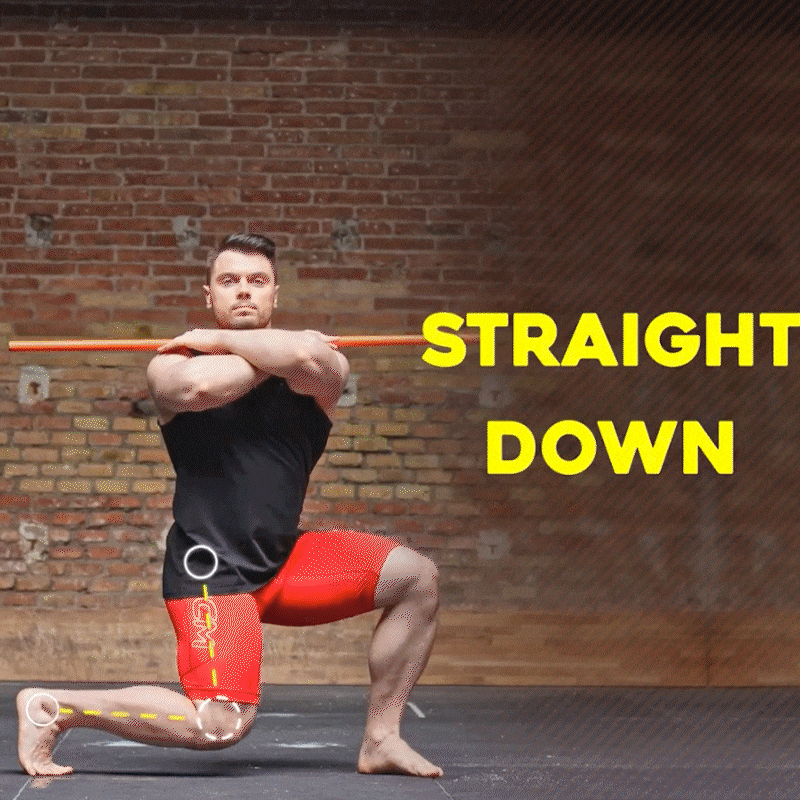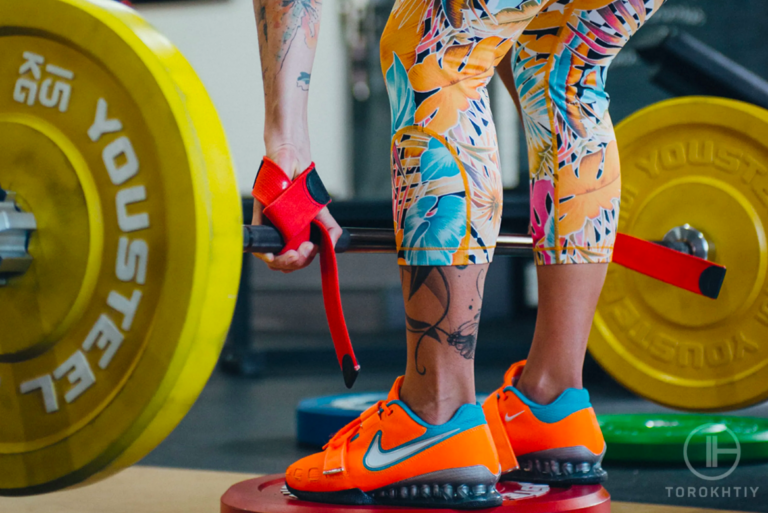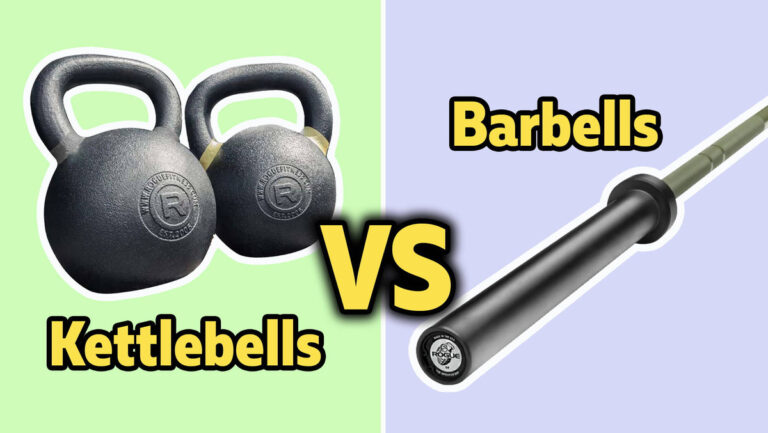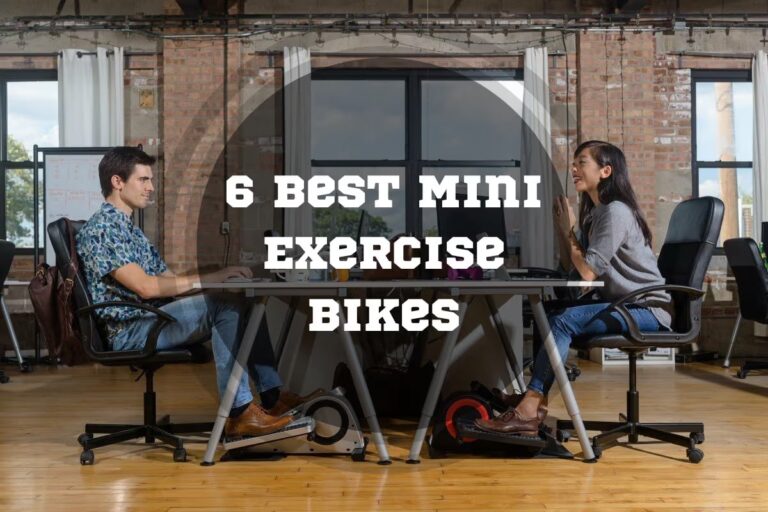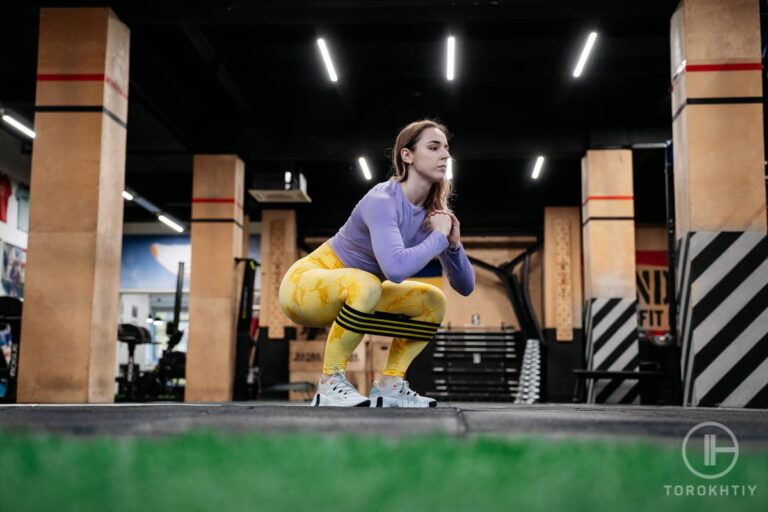Stretching For Weightlifting: All You Need To Know
Reviewed by: Oleksiy Torokhtiy (21 years of Oly Lifting experience)
Weightlifting requires significant stretching. And all levels of athletes may benefit greatly from it. Stretching regularly helps reduce muscular imbalances, avoid injuries, enhance training form, and improve weightlifting performance.
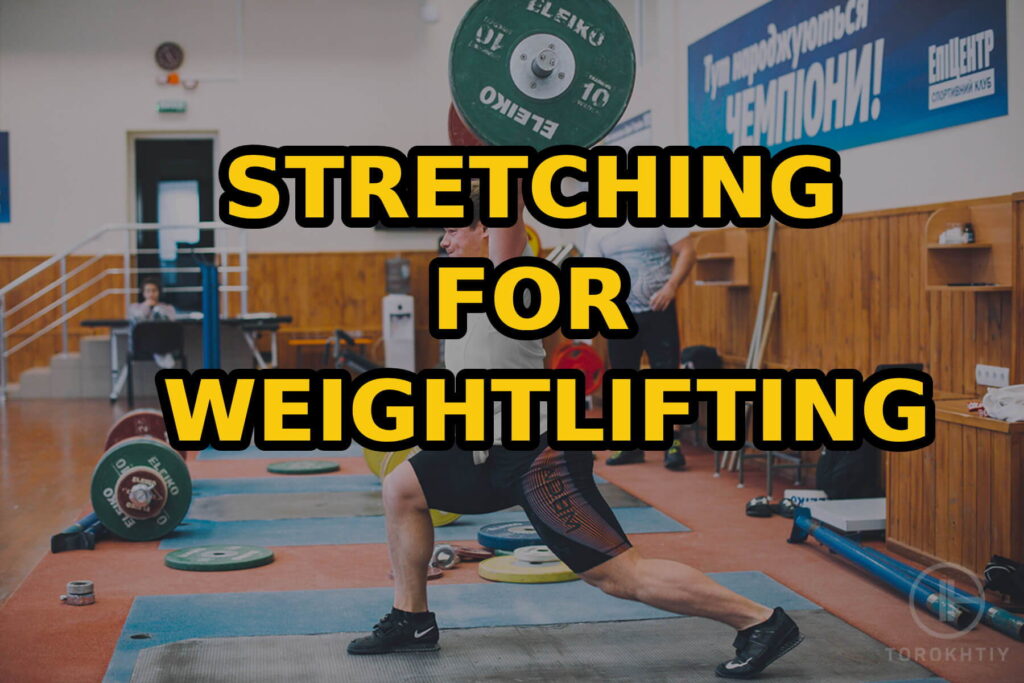
Why Is Stretching Important For Weightlifting?
Everyone who lifts hopes to accomplish their goals without an injury, to feel nice, and, in the long term, to stay as healthy as it possible. This is very realistic; you simply need to keep in mind that, in addition to other physical traits, you also need to stretch and concentrate on flexibility & mobility. You should deliberately cultivate these skills while taking into account individual peculiarities.
The idea that weightlifters simply require strength and that the more strength they have, the more effective they will be is a popular misconception. Yes, strength and power are crucial, but in order to maximize result potential in Olympic weightlifting, great speed, coordination, agility, and mobility must also be present.
If an athlete’s joints lack the requisite ROM and his muscles lack the essential flexibility, even the most talented weightlifter will not be able to execute a snatch correctly & explosively.
Now let’s take a look on benefits of stretching routine for weight lifting.
🔻Full-Body Mobility Program
Mobility For Weightlifting is a 12-week training program for Olympic Weightlifting and other sports, designed for a total body mobility and flexibility development.
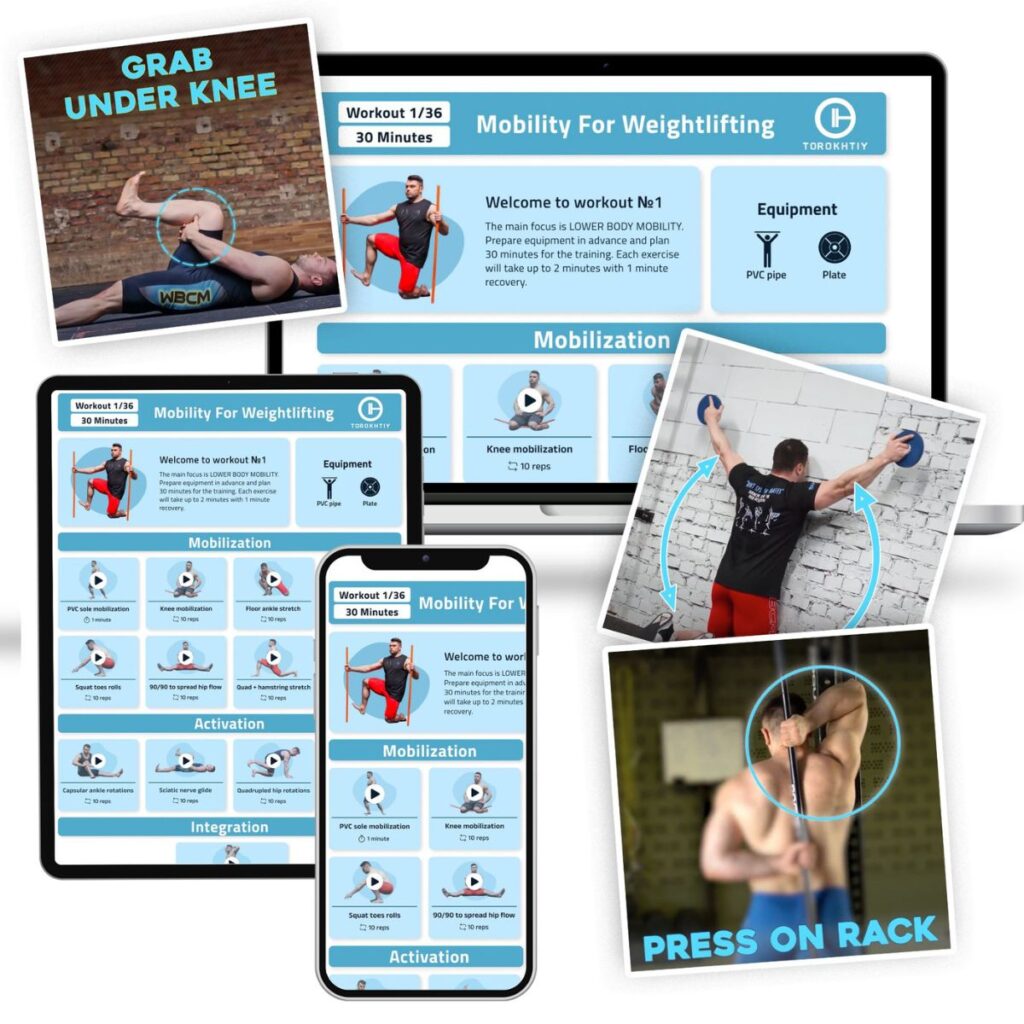
Good For:
1️⃣ Athletes of All Sports and Levels:
Increase your mobility and reach new PRs in lifting — whether you’re into Olympic lifting, Powerlifting, or Functional Fitness.
2️⃣ Those Who are Dealing with Pain:
Pain or other discomfort could be triggered by lack of joint mobility.
3️⃣ Coaches:
Learn new and help your athletes become better.
First, we will discuss benefits of stretching for weightlifters before a workout:
1. A Rise In Blood Flow
Your blood flow can be increased by stretching first. Your muscles become more prepared for hard work when there is more blood flow to them. Due to a reduction in the muscle’s overall viscosity, this serves to lessen the possibility of injuring the muscles and fascia and increases the biomechanical mobility of the muscle. Actin and myosin can interact with less resistance when the density of the intracellular liquid lowers. The “hot” muscles are less prone to injury and ripping than the “cold” muscles & generates effort more effectively.
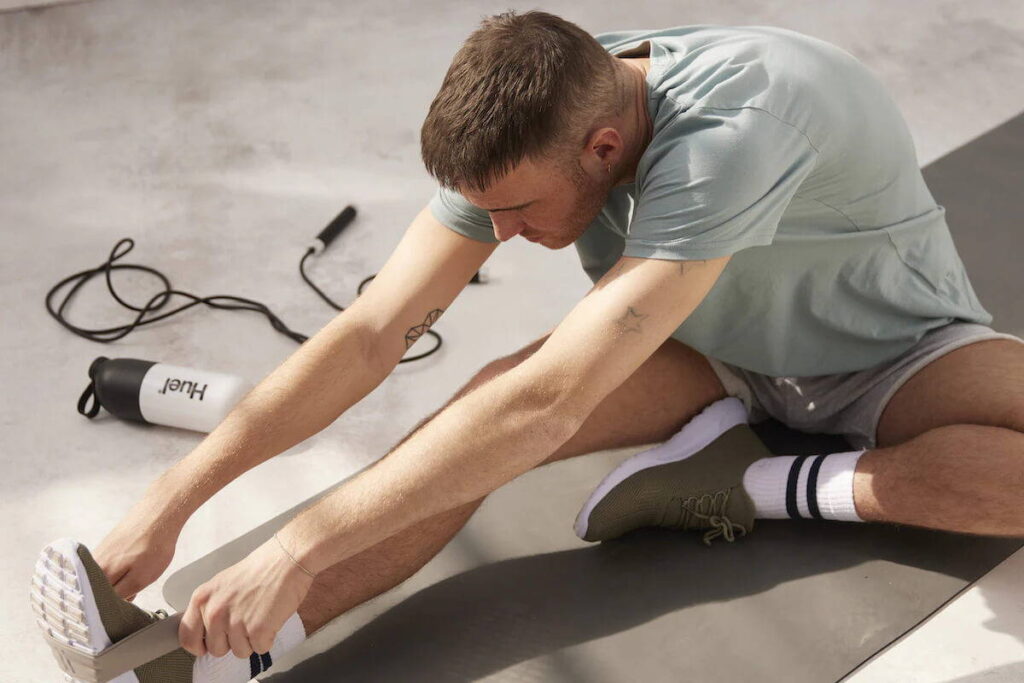
2. Increased Range Of Motion And Flexibility
Your tendons and muscles will loosen up if you stretch properly. This will improve your ROM and flexibility when working out. This enables you to lift weights with improved posture and technique, enabling you to do workouts properly.
3. Enhanced Performance
Stretching for weightlifting beforehand will enhance overall performance since it will boost blood flow, mobility, and range of motion. It is crucial for sports and any other forms of activities that call for agility, speed, or coordination. I believe that when it comes to fitness and Olympic weightlifting, everyone will concur with this statement.
After working out, you might be inclined to immediately rest, but hold off on getting comfortable and checking your phone! After working out, it’s crucial to stretch for even a little while. Stretch after lifting weights has a number of distinct advantages, including:
4. Minimizes Discomfort And Injury Risk
After an exercise, tense muscles are more vulnerable to damage. Your risk of injury will decrease when your muscles loosen up. When completing a typical load, the buildup of lactate in the muscles is not the primary cause of DOMS (Delayed Onset Muscle Soreness). DOMS is a response of the muscles to extraordinary effort that leads to greater traumatization of the muscle fibers. Regular weightlifting might be uncommon for our body and may result in uncomfortable feelings. You only need to use it properly; it’s not a huge deal. Low-intensity cardio exercise and full-body stretching are advised after any intense strength workouts. In this situation, lactate generates energy and balances itself.
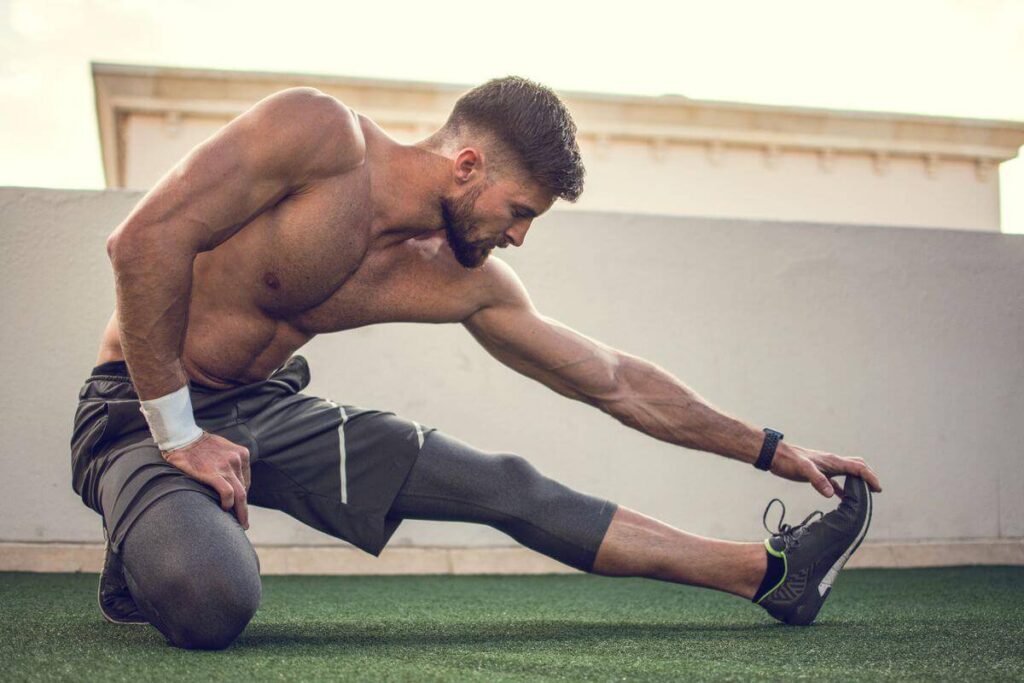
5. Progressive Relaxation
The benefits of progressively slowing down extend to the body as well as the neural system. After an exercise, stretch to give yourself a chance to gently wind down. Muscular cramps, spasms, and involuntary muscle contractions can be mitigated by engaging in stretching and relaxation activities. It is important to realize that huge muscles require a lengthy period of static stretching in order to rest after doing high-intensity or speed-strength activity. For illustration, let’s suppose we spend 3 minutes on each leg & arm stretch and 4 minutes on the back and torso stretch; this will be the minimal amount of time, or 16 minutes. Imagine my shock when I hear athletes claim that the entire stretching process just takes three minutes.
When to Stretch?
We have already discussed that stretching has a lot of benefits and that it is necessary in the training program. Now you need to figure out when is the best time to stretch: before, after, or during the exercise. It is quite common to ask questions in the lifting gym: “should you stretch before lifting” ,“what stretches to do before lifting weights”?
In the practice of stretching, dynamic and static methods are distinguished.
Ballistic and dynamic stretching involves quick swings with maximal amplitudes performed at a high rate of speed in order to provide the muscles the flexibility they need for explosive action. These strategies should be used both during morning workouts and after a thorough warm-up before the beginning of the training session. In order to understand how to stretch before lifting, follow these steps. The suggested range for repetitions in one exercise is 10–25.
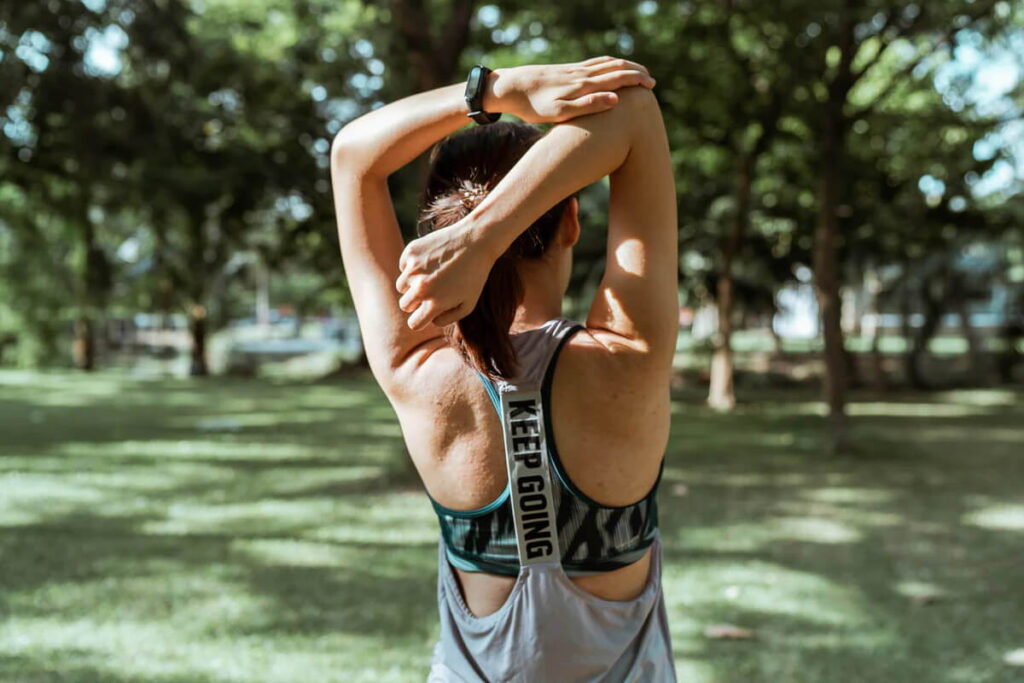
Static stretching is holding specific poses for at least 30 seconds in order to relax, lengthen muscle fibers, and relieve muscular spasms. It’s crucial to understand how to do static stretching correctly. Breathing deeply and steadily is essential, as is applying the ideal amount of pressure to the muscle or joint in order for the muscles to react as intended. The pressure ought to be about 7 on a scale of 1 to 10. Otherwise, the muscle automatically spasms to protect itself from excruciating pain or potential strain. Such stretches for weightlifting are advised as an auxiliary recovery exercise after a session, before going to bed, and on days off.
Stretching a particular muscle right away after exercise helps to drain out byproducts and initiate the recovery, much like stretching at the finish of a session, but it does so earlier and somewhat more efficiently. Therefore, a stretch after exercise does offer some quick benefits.
Best Stretches For Weightlifters
1. Sitting Hamstring Stretch
Initial position: Sit in a butterfly pose on the ground. Your right leg should be extended with the knee slightly bent.
How to perform:
Cross your right leg over your forward-bent waist. Don’t try to push the stretch; instead, hold your lower leg there for support.
Dynamic load (stretches before lifting weights): Hold for 6-12 sec and release. Repeat for several sets each side.
Static load (stretches after lifting weights): Start with holding for 20 sec, then increase up to 30-40 sec. Alternate positions.
2. Pigeon Quad Stretch
Start the stretch with your right leg forward in a pigeon pose.
Drop your left knee to the floor slowly and pause to regain your equilibrium.
When you’re ready, extend your right arm back and grip your ankle or toes, whichever is the most convenient. Hold the posture for 20-40 sec while maintaining a stable body. Slowly return to your starting posture and change from left to right side.
3. V Sitting Stretch
This is one of the most popular “lazy” weightlifting stretches.
Initial position: Sit on the ground in a V position with both legs extended.
How to perform:
Take a deep breath in and, with your back flat, slowly lean as forward as you can.
Your knees and toes should always be pointed upward. Avoid hunching over and maintain a long spine. Hands should be extended in front. Work on extending your hands further and bringing your chest to the floor as you are able.
Dynamic load: Hold for 6-12 sec and release. Repeat for several sets each side.
Static load: Start with holding for 20 sec, then increase up to 30-40 sec.
4. Pigeon Pose
As though you were going to take an athletic lunge position, flex your left knee and pull that leg forward. Bring your left knee to the ground on the outside of your left hand rather than putting your foot down as you would for a lunge. Depending on your range of motion, the left shin could be parallel to the front of the mat or may slant back towards the right hip.
Lay your right knee down on the mat. Lay your right leg flat on the ground. Make sure your right foot is pointed straight back when you glance back. Hips should be aligned with the front of the mat.
Bring your body forward into a bend over your left leg if you feel balanced. As much as you can, keep your hips square and your weight evenly distributed on both sides. If you feel comfortable, put your forehead down toward the ground. Repeat the position for both sides.
Load: Start with holding for 20 sec, then increase up to 30-40 sec for each side.
5. Kneeling Upper Back & Lat Stretch
Initial position: Starting on the ground or a mat, bend your knees.
How to perform:
Reach out to the side with one arm, palm facing up, and begin to rotate the shoulder. Reach till you feel a stretch in your back, push.
Repeat on the other arm after holding this posture for 20 to 40 sec.
6. Chest Stretch
Of all the chest stretches, the traditional doorway stretch is arguably the most well-known. Your chest and shoulder muscles will be more flexible as a result, improving upper body mobility and posture. Avoid overextending the shoulder because of its delicate location, which might damage the shoulder joint.
How to perform:
Put your best foot forward & side onto a doorway.
With your palm up and facing ahead, bend your elbow 90º and raise it to shoulder height. To feel a stretch in your chest, place your elbow and upper arm on the doorway and lean into it.
Dynamic load: Hold for 6-12 sec and release. Repeat for several sets each side.
Static load: hold for 20-40 sec for each side.
7. Leaning Triceps Stretch
Initial position:
Face the wall with your line of sight in front of it. Lean forward and extend your right elbow. Put your right hand on the back of your neck and bring your forearm to the side of your head, just above your ear.
How to perform:
Taking a deep breath, lean your right elbow up against the wall.
Never let your chest touch the wall when you are leaning forward. You should feel a stretch in your upper arm as you gently push your arm against the wall. Exhale, then gradually move your body away from the wall while maintaining good posture and dropping your right arm to your side. Follow the same steps with your left arm.
Dynamic load: Hold for 6-12 sec and release. Repeat for several sets each side.
Static load: hold for 20-40 sec for each side.
8. Kneeling T-Opener
Initial position:
Get into a quadruped pose with the back in a neutral position, the knees under the hips, and the wrists under the shoulders. Put one hand on the back of the head for the initial position. Never pull the neck down or apply pressure to it with your hand.
How to perform:
Start rotating, guiding as far down into the hand as you can with the eyes, head, and shoulder. Then reverse the action, moving as much of the head, shoulder upward as you can. While rotating, keep the lumbar, thoracic, and cervical in alignment and hold the posture of the opposing arm with the elbow extended.
Load: repeat 5-8 reps for each side.
🔻Test Your Mobility Before Starting the Program
Mobility is crucial because it directly impacts your performance, technique, and overall safety.
Complete 3 simple tests to evaluate your current mobility.
Our Program Includes:
- 📺 80 Videos for every exercise:
Unique movements, supported by detailed graphics and voice-over. - 📆 36 Workouts x 30 minutes each:
12-weeks plan can be used as standalone program or as a pre-/post-workout training. - 📊 Tests to track you progress:
Make simple tests in the beginning and after finish to elevate your result. - 🏋️♂️ Made by Olympian:
Designed by a Champion, under the guidance of PhD in sport science and physiotherapist. - 💲One-time payment:
No monthly or any other recurring payments. One payment, life-time usage.
FAQ
How Often Should You Stretch For Weight Lifting?
All healthy people, including Olympic weightlifters, should perform stretching and flexibility drills for all significant muscle groups at least twice to three times each week. Each stretching exercise has to be done for a total of 40-60 sec for best effects.
Is Static Stretching Good For Weightlifting?
Static stretching is recommended after an Olympic weightlifting workout to lessen muscle discomfort and improve the recovery process. Dynamic stretching should be used to better prepare lifters before training because static stretching can have a negative impact on performance.
What Happens If You Don’t Stretch Before Lifting Weights?
Your body will be more sensitive to pain and tension in the muscles. Your muscles stiffen up if you don’t stretch regularly. Your muscles will eventually strain on your joints, resulting in movement limitations, discomfort and lack of mobility.
Conclusion
Systematic stretching allows us to move comfortably and safely. When stretching, you need to pay attention to the fact that some joints need mobility more than stability, while others need it the other way around. Competent stretching is a combination of mobility and stability in the right proportion.
Now it’s your turn! Which stretching drill is more attractive to you? Tell me about it all in the comments!
Also read:
Why Trust Us?
With over 20 years in Olympic Weightlifting, our team does its best to provide the audience with ultimate support and meet the needs and requirements of advanced athletes and professional lifters, as well as people who strive to open new opportunities and develop their physical capabilities with us.
By trusting the recommendations of our certified experts in coaching, nutrition, dietology, and sports training programming, as well as scientific consultants, and physiotherapists, we provide you with thorough, well-considered, and scientifically proven content. All the information given in the articles concerning workout programming, separate exercises, and athletic performance, in general, is based on verified data. We ensure that you can rely on our professionals’ pieces of advice and recommendations that can be treated as personalized ones which will benefit you and fully meet your needs.
The product testing process is described in more detail here
Author: Sergii Putsov
Head of Sport Science, PhD
Best Results: Snatch – 165 kg,
C&J – 200 kg
Sergii Putsov, Ph.D., is a former professional weightlifter and National team member, achieving multiple medals in the 94 kg weight category at national competitions. With a Master’s degree in “Olympic & Professional Sport Training” and a Sport Science Ph.D. from the International Olympic Academy, Greece, Sergii now leads as the Head of Sport Science. He specializes in designing training programs, writing insightful blog articles, providing live commentary at international weightlifting events, and conducting educational seminars worldwide alongside Olympic weightlifting expert Oleksiy Torokhtiy.
Reviewed by: Oleksiy Torokhtiy
Olympic Weightlifting Champion
Best Results: Snatch – 200 kg,
C&J – 240 kg
Oleksiy Torokhtiy is a professional athlete boasting 20 years of experience in Olympic weightlifting. With multiple European and World titles under his belt, he has showcased his prowess in two Olympic Games (Beijing 2008 and London 2012). Upon concluding his illustrious career, Oleksiy dedicated himself to coaching. By 2022, he had conducted over 200 weightlifting seminars worldwide. He is the visionary behind an international sportswear and accessories brand known for its motto, “Warm Body Cold Mind.” Additionally, he is an esteemed author and the creator of a series of training programs and eBooks.

